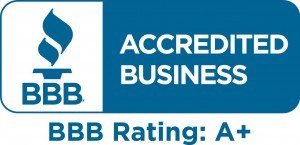
For example, Entrepreneur magazine wrote a great article several months ago discussing different ways companies make meetings more productive. In that article, it mentions Washington University in St. Louis, who conducted research recently about making meetings more productive. They focused on creating smaller group meetings and removed the chairs which forced the attendees to stand. Just by making these minor adjustments, they found that people who stood were less territorial and more collaborative during a meeting. Interesting, huh? In addition, the article mentions, “Amazon’s Jeff Bezos employs a “two-pizza rule,” which keeps meetings small enough so that two pizzas can feed the entire group.” That’s an interesting concept too, isn’t it?
Still, there are other ways to improve productivity during meetings. And for those hiring managers that need to improve their internal meetings, these productivity ideas are a great way to start.
- Agenda, please: Having agenda and sticking to it, is also important, but it goes beyond the obvious. Take it a step further and email the agenda along with meeting time. Mention that the meeting must stay on schedule due to stakeholder availability. Most colleagues may be resistant at first, but once trained, a team of professionals will undoubtedly understand the value.
- Determine a Cost to Host a Meeting: This exercise will help reiterate to employees the basic concept; time is money. If on average, a company spends 1-2+ hours at a meeting, there is a high probability that much time and money are being wasted. Here’s one example of how to estimate a meeting cost. Take the meeting time scheduled, the amount of employees and the average hourly rate of employees (use HR estimates). Using this formula can help determine an average cost of a meeting. If you’re unsure about the formula, work with other colleagues who are a champion for change and create your own company formula.
- Keep a meeting to 15-30 minutes: It’s common knowledge that most people’s attention span is 20 minutes. When meetings are shortened, it encourages swift decision-making, fewer tangents and more productivity. Adding a shorten time limit communicates an immediate productive expectation from the onset. If you’re not convinced, take a look at companies like Yahoo’s CEO, Marissa Mayer who schedules 10-minute meetings because of her hectic schedule.
- Remember to assign deliverables: Recap all the deliverables the attendees have after every meeting. There is nothing more unproductive than leaving a meeting without attendees knowing and agreeing with their takeaways or to-dos. Be brief in the review and have a deadline attached to each deliverable.
Creating more productive meetings can happen, but like with anything, it takes everyone’s commitment. That shouldn’t be too difficult when you consider that most employees think meetings are wasteful. Right there is an example of a powerful motivator for change, right? So what are you waiting for?
ABOUT THE AUTHOR, Ingrid Moore
Ingrid Moore is the Founder and CEO of Corporate Resources of Illinois, an employment & staffing agency with over 20+years’ experience located in Schaumburg, IL. Ingrid and her team assist employers with finding the right hire for their business. For more info, follow us on our LinkedIn Company Page, or follow us Corporate Resources of Illinois‘s Google+ page.




